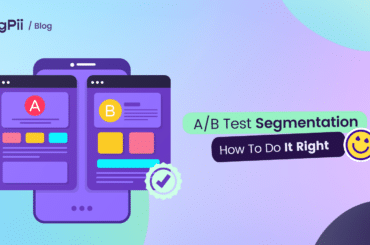All You Need To Know About Session Replays
The best way to understand and visualize someone else’s experiences is to put oneself in their shoes. It can change not only one’s perspective but their expectations as well.
The advances in modern technology have enabled us today to provide superior quality products and services to customers. At the same time, we have tools today that make it possible to live and feel the exact customer experience as a customer begins using them.
Today, it is possible to reproduce online the experience of a customer in the form of video. Traditionally, companies rely on web analytics tools and metrics like the number of clicks, click-through rates, bounce rates, conversion rates, page visits, cart abandonment, and more.
While extremely useful, these do not recreate a highly personalized picture of the end-user. Sure, you will be able to trace what works and what does not and identify potential deal-breakers.
Nevertheless, you will not be able to paint a complete picture of the customer’s journey when he starts using the product.
That is where session replays come in.
What is Session Replay?
A session replay provides a detailed breakdown of the customer’s activities as he begins using a product/service. They offer a holistic video format for the company to view, which captures in detail all the customer touchpoints in their endeavor to use the product. It collates all the various deterministic metrics together and helps companies connect all the dots. It helps elicit a complete picture of the user.
Since users are the most significant patrons of a service/ products companies must understand what they like and dislike. Session replays in this regard help provide precious qualitative data about the usage patterns of users.
While web analytics tools and metrics allow you to visualize the “what” part of the problem, a session replay lets you revisit the “why” part.
WiderFunnel’s Michael St. Laurent opined, “session replays provide incredibly in-depth insights. In fact, they often offer the easiest, most cost-efficient way to get into the minds of your customers.”
In a nutshell, session replays provide an “over the shoulder” glance into user behavior that companies require to create flawless user experiences, aligning business and IT with a singular view and source of digital truth.
One should not assume that a session replay means simply recording browsing sessions or video recording of what the customer does.
Session replay goes way beyond mere visitor recording.
It deconstructs the way the user did what they did and reconstructs the same for you to view uninterruptedly as if it were a movie or a play. The data you get is much richer in quality and more meaningful than a quaint visitor recording.
Luckily, many automated software platforms these days are making session recording even more accessible and detailed.
Take FigPii’s sessions recording tool, for instance:
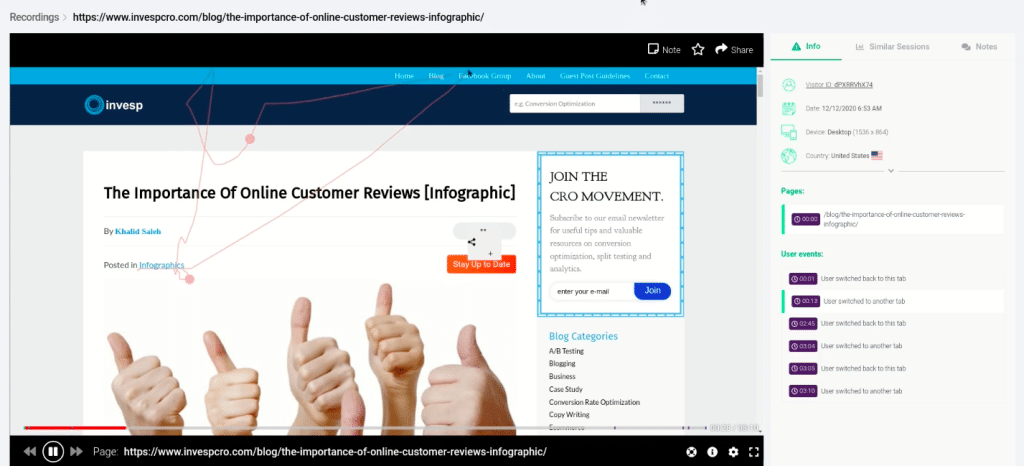
(image)
FigPii session recording tool even allows users to filter sessions. For instance, you can see viewers who entered or exited the site from a specific page.
It shows you exactly how you the users interact with your page, including:
- Where all did they click
- Their scrolling patterns
- How they navigated from one page to another, and more
The tool also shows you all of the user information, such as:
- What device were they using
- When did they come to the site
- Which site did they come from before landing on your site?
You can even look for different session recordings for the same visitor and take notes on the videos.

As a result, session replays provide the perfect fodder for product managers, UI/UX designers, marketers, and developers to ponder upon and build better and more appealing products that can solve customer’s problems even more efficiently.
Significant Uses of Session Replay
Hundred years ago, business problems were a lot different than they are today. All products were physical in nature, and services revolved around those few products.
Human interaction and collaborative problem solving were the only way forward.
In today’s digital world, ways of problem-solving have become easier, but in-person human interaction has drastically decreased. The problem has been compounded manifold by the ongoing COVID-19 crisis.
However, most products and services are now digital. Identification of the problem, and correct resolution, therefore, sometimes gets lost in translation. A session replay helps provider companies get a real-time view of the customer’s product/service usage, and challenges if any.
The gigantic amount of information helps provide companies highly actionable insights that would not otherwise be possible. The result is targeted, speedy resolution of problems, and enablement of a seamless experience that ultimately results in improving customer stickiness.
Solving Business Problems With Session Replays
Session replay tools, just like any other web analytics tool, aim to solve real-world business problems.
Let’s look at some of them:
1. Solve Product Bugs
The internet is accessible via multiple devices. Each device has its own specifications and configurations, like OS, default browser, screen size, resolutions, and more.
Here’s an example of a browser not being supported:
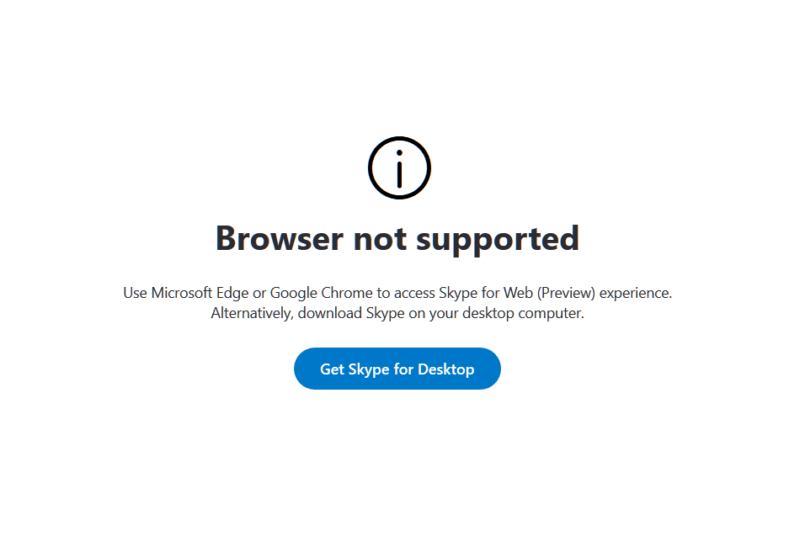
(image)
Therefore, when a user tries to visit your website unsuccessfully, the reason is attributable to many reasons. However, drilling down and finding the reason can be time-intensive. Precious hours can be lost for your development team while trying to reproduce the error blindly.
Session replay tools linked to user sessions and project management tools like JIRA and FigPii help record the entire view and timely log a bug for the exact problem the user faced. By identifying the issue at the very start, the development team can enable bug fixes in a targeted manner, saving valuable time and energy.
2. Optimize Conversion Rates
The backbone of any company is sales, and today, a lot of it depends on company websites, regardless of your industry. Marketers and designers are always on the lookout for optimizing the conversion rates of websites.
Some of the major problems faced are declining CTR, faltering CTA strategies, and faulty landing pages. As a company executive, you can understand areas that are/are not going your way, but it’s difficult to pinpoint “how.”
Session replays solve this problem by showing you the exact user journey as they start interacting with your website. You can see what is going on inside your website as a whole or inside individual pages. It helps you strategize by making the right, informed decisions.
For instance, UserConversion, a UK-based company, managed a 26% enhancement in their conversion rates using fullstory.
3. Faster customer service
Customer service providers work in one of the most fast-paced work environments. On top of that, customers sometimes raise bugs-related issues without being specific, which don’t say much about the problem.
A classic example can be, “The tool is not working,” without any elaboration.
Your customers simply want to have a good experience with your website – without bothering about bugs and other related issues. And you want to give them just that.
But how can you do that if you cannot see what they are interacting with online?
It’s challenging to keep one’s cool, understand the context, and solve problems under pressure, especially when there are hundreds of people lined up with queries.
It’s easy to lose one’s head within this chaos.
Session replays help recreate the exact problem statement of the customer, direct the executive to the source, and helps provide targeted solutions within minutes. With session recording software, you can look precisely into the eyes of your customers and improve the experience by seeing it for yourself.
It allows you to have complete control and understanding of every single call and make instant decisions!
4. Fix User Interface Issues
Understanding how a clock works is one thing; trying to do the same for digital products can be quite the opposite. Without direct observation or actually using the software, little is discernible about how the interface is.
As such, finding potential pitfalls can seem impossible.
However, that’s exactly what developers, UI designers, and marketers have to do in order to solve problems. Session replays help recreate the environments of users using the software and can highlight prospective problem areas that need fixing.
For example, Jumbo Interactive, an IT company, claims to save more than $10,000 annually by identifying crucial bugs and fixing them using session replays.
Issues can crop up even during customer onboarding on a particular company platform. Clients can find issues, navigational difficulties, or even the UI to be non-intuitive. This can lead to the non-renewal of contracts at the end of the licensing period.
If that happens, the company’s bottom lines get hurt. To avoid such instances, session replays help understand areas where users lose their interest or face difficulty handling the UI right at the start.
Wistia, a video platform, used session replays to the significant effect that resulted in a 30% increase across their customer engagement metrics.
5. Identify User Frustration Points
Unless your client is happy with your product and finds it easy to use, they will not use it. Apart from missing potential sales opportunities based on recommendations, you are likely to lose the existing customer as well.
User frustration can lead to disinterest, decreased usage of your software, and ultimately, abandonment. Therefore, it makes business sense to identify when and where a user is getting frustrated.
Luckily, session replay tools can identify frustration signals.
Many of them can also perform detailed analytics and even identify usage patterns with respect to cart or form abandonment. By recognizing these indicators, companies can take timely corrective actions.
6. Identify Malicious Activities
As of 2020, the average cost of a data breach is $3.86 million. And according to the same IBM report, the average time to identify one is 207 days.
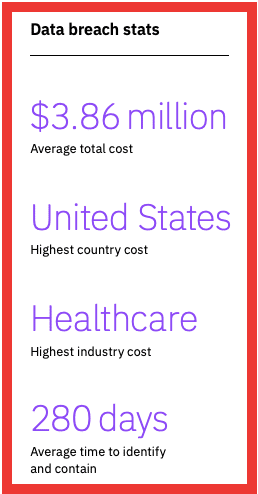
These are significant numbers!
The consequences of a data security breach are, therefore, frightening.
Many session replay tools can help you discover malicious activities like SQL injection attacks, URL attacks, and cross-site scripting.
By replaying pre-recorded sessions, it’s possible for tools to dig out such instances and help ring the warning bell for the company to take corrective measures immediately.
7. Legal Business Evidence
An uncommon usage for session replays, but this can sometimes prove crucial for companies. In case of any dispute regarding licensing agreements or customer accessibility, session replays can serve as adequate legal evidence in courts of law.
8. Dynamic Web Application States And Client Interactions
Enhancing a website’s usability does not only mean improving individual pages or the website as a whole. It also means identifying user behavior patterns with various dynamic website application states like pop-up windows, dropdown boxes, pages that need continuous scrolling, lightbox, and more.
Improving these areas is a way to get potential clients to use your website more. It translates into you getting multiple chances to impress them and retaining them as customers.
As a company, you need to be on the lookout to upgrade and revamp your customer experience. The focus must be on providing value to customers and solve business problems. All the above pointers aim to do just that. This improves your business topline, which ultimately helps your company survive.
9. Avoid Awareness Bias
Modern digital advancements have made it easy to make website-specific quantitative measurements. On the contrary, there are few methods for qualitative research – and one of the most effective ways is session replays.
Companies that let their own developers perform user testing often fall prey to awareness bias, also known as the “Hawthorne Effect.” It is also costly and consumes a lot of time.
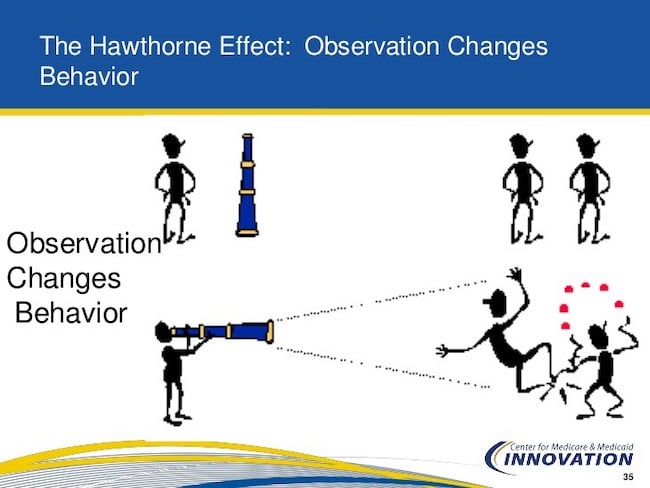
Session replays eliminate all of these complications and enable companies to gather crucial, real-time evidence about how an existing customer/third-party user feels and the challenges they face while using their product. They broadly capture all user data directly, allowing companies to do combined data analysis, which is crucial in uncovering hidden signals.
Ultimately, it helps companies design and create the right products based on customer needs and wants and ensures a competitive advantage in the market.
Session Replay Tools to Look Out For
Session replay tools are nothing new to the web. They’ve been around for years, and now with the advancements in tech, it’s easier than ever to monitor user interactions on your website.
There are tons of these tools available, with many being very affordable. They have tons of functionality and can be used for many different types of projects. Below is a collection of some of the best tools to choose from when looking for session replay software.
| Capterra Score | Free Trial Period | Starting Price | Cost for up to 1,000 recordings/month | Filtering Options | Data Retention | |
| Hotjar | 4.7 | No (30-day money-back guarantee) | $0 per month | $39 per month (for up to 3,000 recordings) | Yes | Yes |
| FigPii | 4.8 | 14-day free trial | $49 per month | Unlimited recordings on every plan | Yes | Yes |
| Fullstory | 4.6 | 14-day free trial | Quote-based plans | N/A | Yes | Yes |
| Mouseflow | 4.7 | 14-day free trial | $0 per month | $24 per month (for up to 5,000 recordings) | Yes | Yes |
| Contentsquare | 4.8 | N/A | Quote-based plans | N/A | No | Yes |
| Inspectlet | 4.0 | No | $0 per month | $0 per month (for up to 2,500 recordings) | Yes | Yes |
| Smartlook | 4.7 | 10-day free trial | $0 per month | $0 per month (for up to 1,500 session recordings) | Yes | Yes |
With the growing trend of online shopping, more brands are noticing the importance of improving their customer experience. While analytics can give you important qualitative data on user behavior and interactions with your website, it’s often not enough to become actionable insights.
With the above-mentioned session replay tools in place, you can dig in deeper and uncover other aspects of customer behavior that were previously hidden in plain view.
Features to Look For In a Session Replay Tool
Session replays identify and resolve challenges across industries. Its applications span multiple business verticals and can have extensive variations.
While the exact features that companies look for in this tool closely relate to the relevant industry, some of them are important across business horizontals.
Let’s take a look at some of the features that you should consider while looking for a session replay software solution:
1. Session Filtering
A session replay tool captures many sessions across multiple user journeys. When analysts sit down to break it down, the first thing they look for is an excellent filter that enables them to get the relevant sessions.
While not every tool provides a filtering option, this feature is essential, especially when you have a large number of sessions. Hotjar and FigPii are two great examples.
Here’s an example of FigPii’s extensive filtering options:
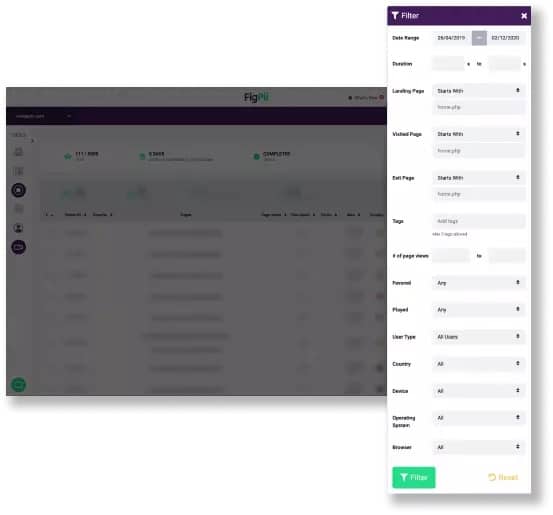
2. Performance
Most of the session replay tools are hi-tech and have the latest proprietary software embedded. This works at the backend of the tool to capture data related to the website or the application. Based on the software, the speed of the website will vary.
Thus, it makes sense to choose a high-performance, speedy tool like FigPii or Fullstory with minimal loading time.
2. Data Retention
The tools capture lot of data over time. The more the data, the deeper the insights generated. The real problem is retaining them over time. While some tools like dynatrace provide retention periods up to years, some may store them for hours, days, weeks, or months. Choose a tool whose data retention policy matches your requirements.
3. Caching
A caching feature helps store previous search requests and results in a browser-centric manner. This helps in faster loading times for future requests. While some session replay tools cache assets like images, CSS, and HTML, many do not. This is an important consideration while choosing the right tool. f
4. Form Analytics
Businesses need to know why their customers are abandoning their websites or not renewing their subscriptions. It helps them take timely corrective measures and is a feature aimed at customer retention. For example, Mouseflow provides a great form analytics attribute that helps companies find out the reason for abandonment.
5. Sampling Extent
Most tools capture all the sessions of a user. However, some capture only a sample set from the entirety. While this is a great way to save memory, it also needs a bit of luck.
If the session you are looking for does not fall under the sampling set, you will miss it. Tools that perform sampling can restrict its utility.
If you are working on a small project under a tight budget, it makes sense. However, if the project is a major one, one should choose a tool that captures entire sessions, like Fullstory and FigPii.
6. User-Friendliness
Your own developers should be able to adapt to the session replay tool quickly and accept it as an integral part of your customer research process.
Just as your customers will not use a software tool that is not intuitive, your employees will also denounce a tool with a steep learning curve. Therefore, when choosing a tool for your engineers, ensure it is user-friendly and easy to use. Research the tools before making a purchase because it is a one-time investment and will cost money if it is scrapped because it is difficult to handle. Crazy Egg, LiveSession, and FigPii are great examples.
7. Pricing Plans
No matter how big a company you are or how important the project is, pricing is always a decisive factor in choosing the right tool. For session replay tools, the price can vary based on factors like data retention, ability to capture graphics and animation, sampling, language capabilities, and more. There are a lot of great free tools like Plerdy and Crazy Egg if you are looking for basic features.
That said, if you want more characteristics and facets, it is best to get a paid plan.
The Mechanism of Session Replay
Arthur C. Clarke once famously quoted, “Magic is just science we don’t understand yet.”
Session replays are also enshrouded in an air of mystery and intrigue, making it eerily magical. Watching someone’s user journey across a product interface can initially be difficult to comprehend.
So, let us deep-dive into what really goes on behind a successful session replay.
At the heart of session replays is the software engineering marvel called the “Document Object Model.” It is a computer language-independent cross-platform model that enables users to communicate and interface with websites.
Here’s a look at the DOM: a tree structure that interconnects thousands of individual objects that come together to make up a website.
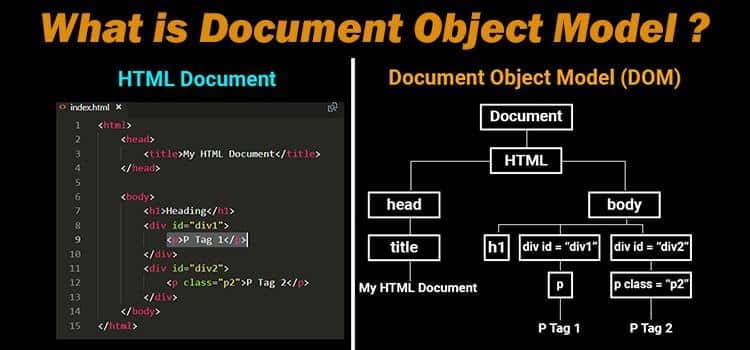
(image)
Understanding how DOM works at the coding level can be difficult, especially for readers not versed in software jargon.
So, let’s try to break down the concept of a DOM with the help of a car! Envisage your website to be a car. In this case, the DOM is the physical structure of the car, which includes the frame, windows, doors, wheels, mirrors, windscreen, gearbox, and more. The design and technical expertise that creates the car correlates with the pieces of code written in languages like Java, HTML, and CSS. Just as the mechanical engineer is responsible for the working of the car, the snippets of code take care of how the website looks, behaves, and functions.
When someone visits a website, it makes certain changes to the tree structure of the DOM. Every action of the user thereafter creates certain alterations and variations in the website environment. The collection of the moves is a summation of individual pieces of mutations. All user moves through the website are recorded and timestamped and can be replayed on demand.
That’s what a session replay does – it reprises and recreates from scratch the entire user journey through the website for your viewing pleasure whenever you want. It is analogous to regenerating not only the car but also all the actions that a person took from the moment they stepped inside, like shifting gears, adjusting their seats, placing coffee on the holder, and fastening their seatbelts.
Regarding software terminology, the gamut of operations related to session replay is divided into two categories: Events and Assets.
Every time a user makes a move while logged in on a website, the transfer of information takes place. Although the user is not aware, and they can carry on unhindered, every action, however small, creates new information. Every single instance of information generation classifies as an “event.” Session replays collate all such events and reconstruct a highly detailed, temporal recreation of all the activities.
However, that is only half the picture; with “events,” only the questions of “how” and “what” are answered. The picture is complete with the help of “assets,” which help answer questions like “where.” Assets provide the backdrop in which the events are taking place, and as such, render its context.
The replays also capture the relevant web resources like images, codes, HTML, CSS, and more. This is important because many session replay tools do not have in-built functionality to cache the resources automatically, which can inhibit their ability to recreate the entire session. The “asset” functionality decisively eliminates the issue.
What Should You Record Using Your Session Replay Tool?
There is no perfect recipe or standard rulebook to create websites. Only the designer’s creativity limits a website design.
As such, the possibilities of how to build a website can be endless. Websites can be as different from each other as chalk and cheese. They differ with respect to the platform they are built-in, the languages used, the responsiveness, and their dynamics.
Variations also appear in the form of accessibility, the appearance of pop-up windows, and even in the case of screen resolution and clarity. Clearly, there is no “one size fits all” when it comes to designing session replay software. They need to be multi-functional and capable of dealing with unforeseen complications.
Nevertheless, most of them have limited features in the real world, and sometimes some aspects are missed. Your choice of tool will depend on the set of features that you need.
Here are some of the most relevant and in-demand aspects that most of the tools in the market record:
- HTML and CSS (including most of the basic web page and app elements)
- CSS animations
- Vector graphics and animations in scalable vector graphics
- Hover cursors and effects
- Embedded <iframe>s
- Script-modified input values
- Window resizing
- AJAX URL navigation
- HTML5 <audio> and <video> playback
- Multi-touch events (on mobile devices)
- Web Components, and by extension, Shadow DOM
And many session replay tools on the market are aiding this journey easily.
Hotjar and FigPii allow users to replay features like adjustable replay speeds and enable filtering sessions by devices used, money spent, exit page used, and more.
FullStory helps you identify frustration signals within the session recording. Some tools even provide a 365-day session recording data storage.
The best session replay tools will be skilled at capturing not only the banal details but also the subtle nuances and overtones that the user experiences in their devices and browsers while journeying through the website.
This will help generate the deepest insights and enable companies to improve their user experience.
Session Replays and Privacy Disclosures
The limits of privacy in the digital world have become a raging cause of disagreement in today’s world.
With the rise of technology, the world is continuously grappling with cyber-security issues related to security infringement, information compromise, & identity theft, to name a few. With no end to the many maladies of cybercrime in sight, topics like proper privacy disclosures, agreements, and user consent have become important.
Sensitive personal data like healthcare details are increasingly coming under regulations, like HIPAA in the USA and GDPR in the European Union.
Like most other applications, session replay tools also require in-depth disclosure to their users about the privacy policy. Disclosure agreements can be made, and consent can be extracted in multiple ways.
For example, if someone uses Google Analytics, it’s highly probable that they’ve already consented to requirements mandated by Google. At its epicenter, the techniques of consent gathering of web analytics tools aren’t much different than those of a session replay tool.
However, there is a stark difference when it comes to the requirements.
A session replay tool does not need to collect sensitive data like passwords and usernames.
In fact, a fundamental requirement is to conceal personal data from the session replay viewer. Choosing a tool that respects individual privacy and enables your company to work with a strapping privacy capability is important.
The privacy and protection of customer data are the responsibility of the company as well as the customer. While the customer should ensure they do not furnish unwanted information, the company also strictly needs to adhere to data-friendly policies.
A great way to clearly communicate the do’s and don’ts to the client right away is exemplified by Fullstory via their detailed “Acceptable Use Policy.” FigPii’s “Terms of Use” is another great example.
That’s a Wrap!
Session replay is one of the most powerful tools for learning how users interact with your website.
It’s more powerful than user testing and simpler to set up and record. Honestly, you can thank modern-day session replay tools for that.
This guide covered everything you need to know (and more) about the session replay tools. You’re now much more familiar with the term, why it’s beneficial, the best session replay tools, and the functioning behind the entire concept.
Hopefully, you found this Ultimate Guide to Session Replay to be an interesting (and helpful) read and will refer back to it as you try to decide if Session Replay is the right fit for your business intelligence system or not.
If you plan to use session replay technology for your business, review all the session recording software mentioned to make your task easier.


